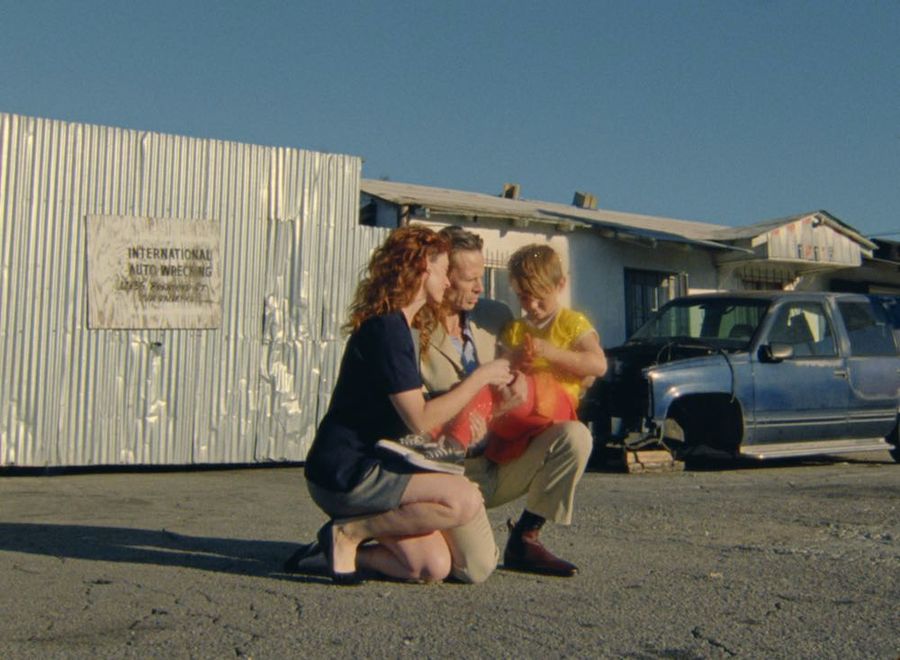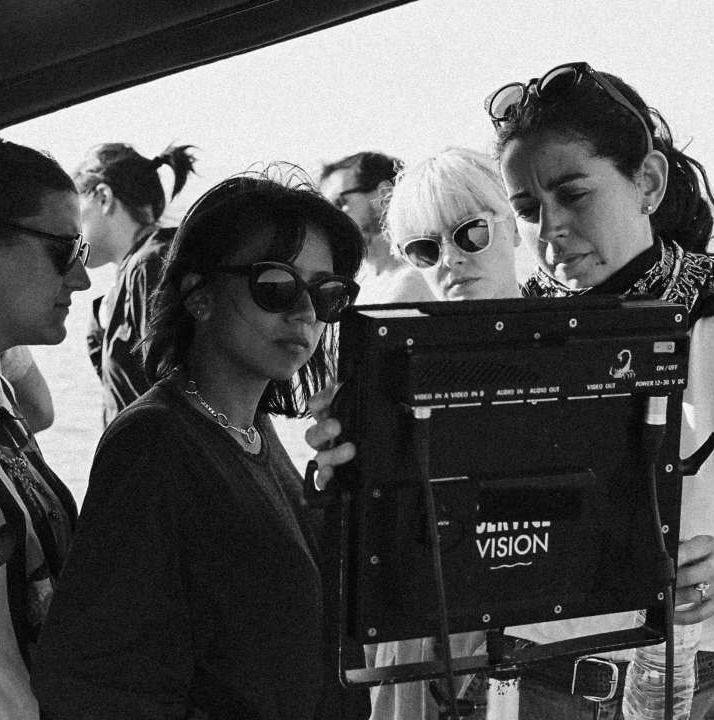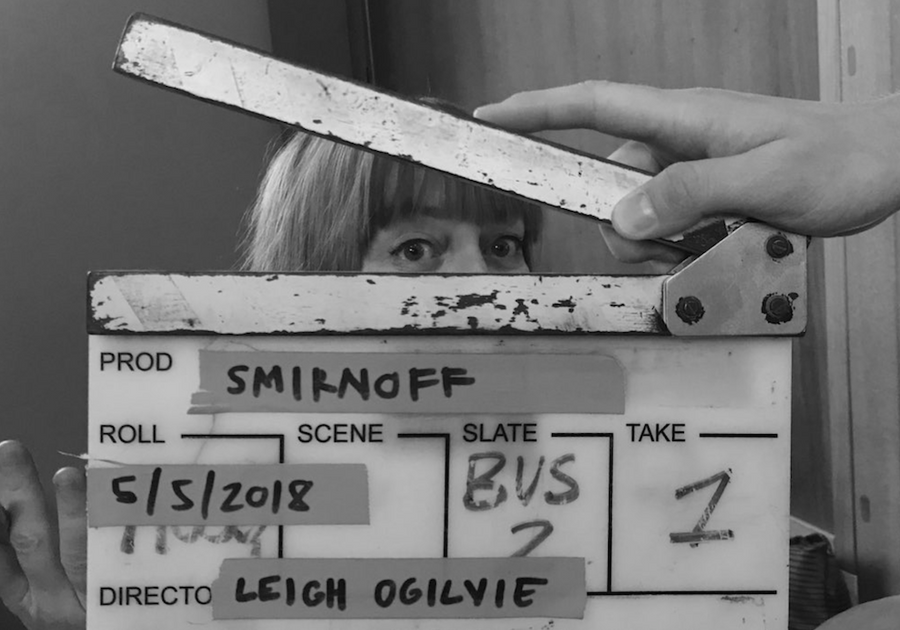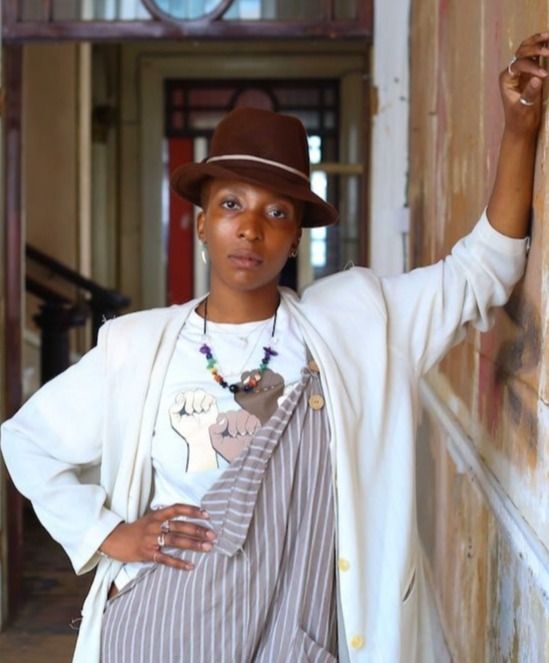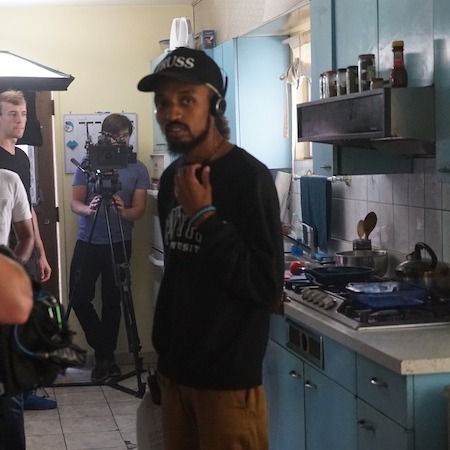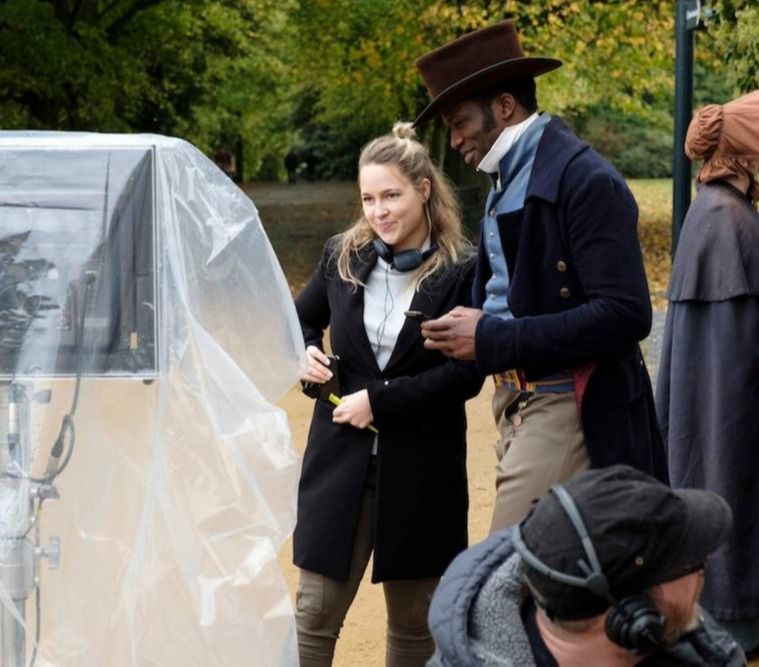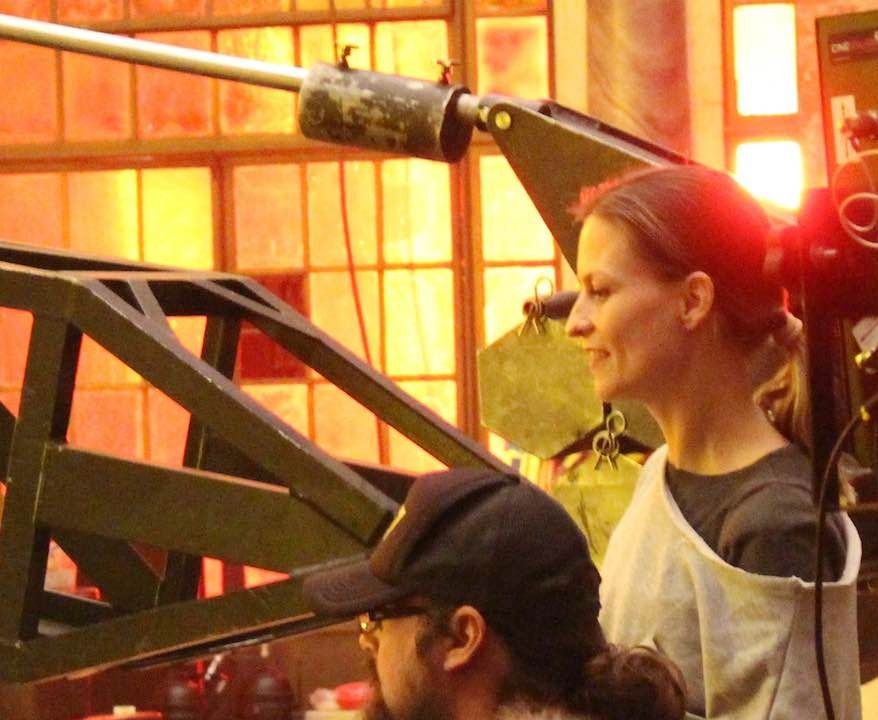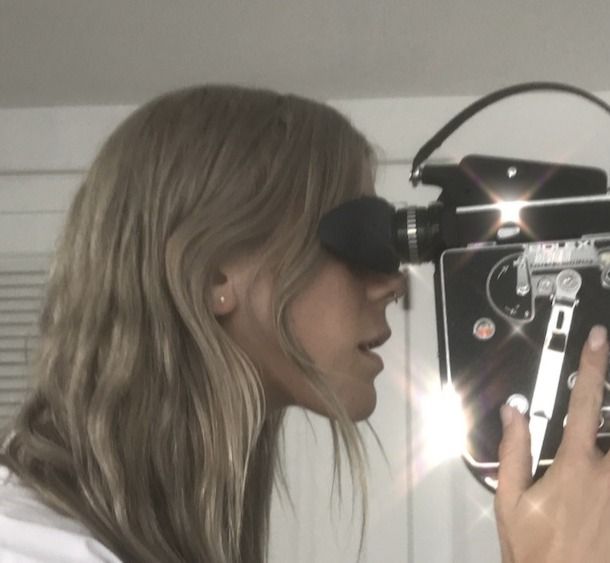Director Diana Kunst and her collaborator Mau Morgo open their video for James Blake and Rosalía‘s “Barefoot In The Park" with a striking image: a butterfly floating down over the scene of a flaming car wreck, watched over by two motionless children. It’s a powerful juxtaposition, serving as a fitting introduction to the directorial duo’s sun-drenched masterpiece of a music video.
Diana and Mau take viewers on a metaphysical journey across time and space. James and Rosalía gaze back at ephemeral versions of their child selves, who evaporate away into thin air. Later on, footage of the two singers zooms in and out of an abstract, swirling miasma, finding a vast, expansive universe within each individual. “Barefoot In The Park" is a gorgeous meditation on memory, mortality, past and future selves, and the space we occupy within the wider world.
We spoke with Diana about finding kindred creative spirits in Rosalía and Mau, taking inspiration from Wim Wenders, and her desire to be recognized for her talent, regardless of gender.
This is not the first music video that you and collaborator Mau Morgo have worked on with Rosalía (having previously directed the beautiful video for “Disputa: De Aquí no Sales”). Can you tell us about the kind of creative relationship that you’ve cultivated with Rosalía as an artist?
Diana Kunst: Rosalía is a very unique person. Having seen her singing on stage, I was able to start an immediate creative relationship, because she expresses so much when she sings that she can make you feel something she’s feeling without even knowing her. That’s what I feel when I listen to her songs—you don’t need her to explain anything to you, because it’s already there. You can feel it every second.
After meeting her and working with her, this feeling evolved into a creative relationship based on trust. We don’t need to talk too much about a concept or an idea in depth, because by the time I start explaining the creative approach to her—what we feel and how we want to translate it into images—she always gets it; she’s like, “Yes, that’s totally it," and we get super excited to make it happen.
I feel like we are both very intuitive people, so it becomes super easy to work with her. I feel we are connected and that we speak the same language. That’s something that I really value in this kind of relationship, where we have to create something where both of our worlds have to collide and where we have to start building together. That’s the most beautiful thing ever: when artists meet and talk the same language, but at the same time, each of us contributes from different sources.
Having Mau in the creative combo makes it even richer because each of us come from all different backgrounds, which allows us each to step outside our comfort zone occasionally and explore places we might not have gone to alone. Before meeting Mau, I would never have expected that collaboration would bring you to such beautiful and unexpected places where you learn so much.
"It’s all about how all these moments mark us—how all these different experiences build us into what we are later in life as we get older, and how we have to fight to get past the difficult times to a brighter place."
I think that Rosalía has been able to synthesize the qualities of our generation very well—a generation that likes to take from different sources and experiment with different territories. You can clearly see that in her music: She works with a flamenco base, but then she experiments with all different kinds of styles with no fear and lots of confidence, collaborating with different artists. That’s why she gets to such interesting universes.
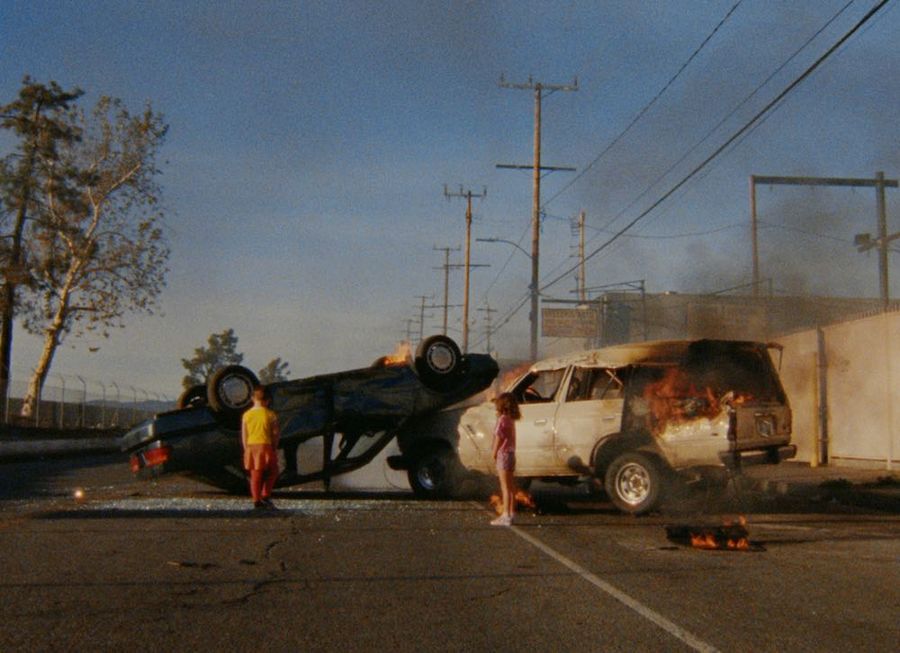
Since both you and Rosalía are from Spain, is there any shared visual heritage that contributes to your creative connection?
I guess so. I feel like people from Spain sometimes have a hard time being proud of where we are from, but this has changed over the last few years. We are more proud than ever of our heritage.
Maybe it’s only me talking about my experiences but, since I love to travel, I’ve been very lucky to be able to immerse myself into different cultures, which I’ve found super necessary for many reasons. However, it’s also made me think about my own culture. We have so many things to express and many things to be proud of, and that’s what we are trying to embrace now.
That’s why on the “De Aquí No Sales” video we decided to shoot in the land of El Quijote, to show the rest of the world that this is not only a place that belongs to a book as a part of the story, but something that is actually real, unique, and beautiful. We wanted to kind of “bring it back to life from the ashes." We worked on that metaphor for the story of the toxic relationship that the song talks about, and for the whole concept of the Malquerer album. At the same time, though, we were also using that symbolism to represent the way Rosalía is reinventing that part of the world in her own way with flamenco music.
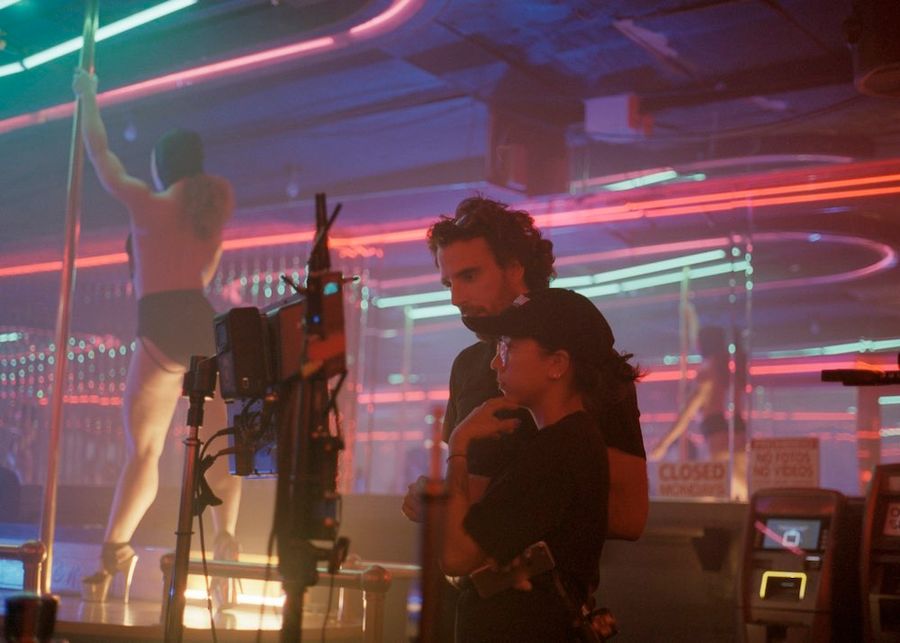
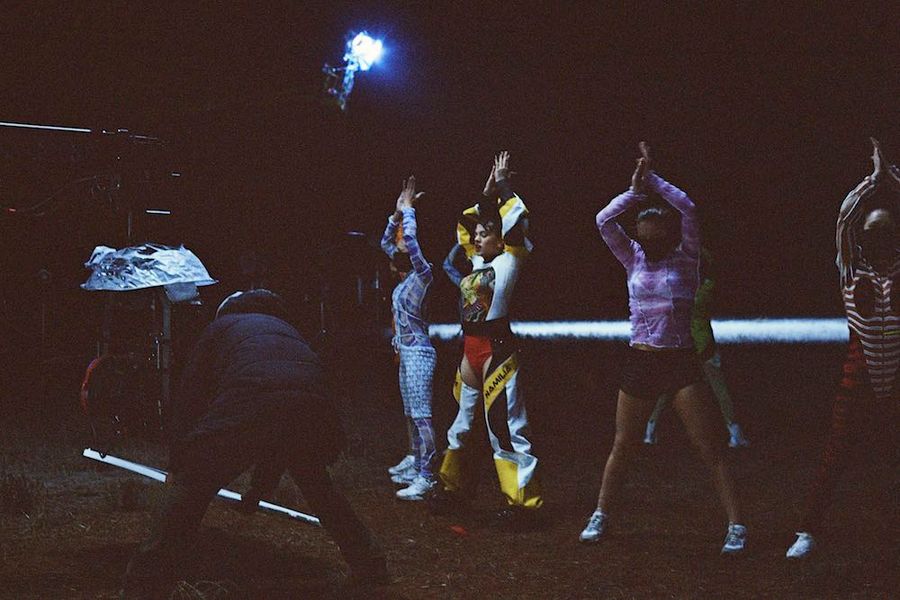
Where was your starting point for ideas when you were first presented with the opportunity to shoot the music video for “Barefoot In The Park”?
At the very beginning, when I first listened to the song, before talking with Dan and Semera (James’ manager and video commissioner) I found it very beautiful, dark, thrilling, cosmic and visceral. It’s a song that really touches you, which is a great starting point to begin building a visual universe.
I felt that it was dark and moody, but they wanted to do something bright and in daylight, so I remember I had to fight a lot to not think up dark stories and dark set ups. It was clear that there was a love story behind the lyrics, but at the same time we didn’t want to make Rosalía and James feel like a couple. So we had to think about an idea about this feeling that was clearly love, but without telling a story based on a couple.
So we came up with this idea about self-love: that point we reach at some point in our lives where we feel safe, a state of mind where you can feel like home, feeling “barefoot in the park," feeling the freshness of the grass in the summer . . . we translated that idea into what you see in the video. Two energies, two kids that meet at the same point of a tragic accident. Each one of them starts walking and that’s where we start to accompany them through their lives, highlighting some of the moments of their childhood in a very metaphorical way. They grow up and they cross paths again; they feel like they know each other, but they don’t know why.
Without knowing, they reach that point of self-loving, where their energies collide again: from a tragic experience to some years later, at a very beautiful moment in their life. Each of them had different experiences, but all of these made them into what they are now.
We also wanted to throw out the possibility that the accident never happened, or even that they never survived, but in a way where their energies are always present in that nirvana of love and peace.
We also added another layer where the actual James and Rosalía look at their younger selves the whole way along the path. That’s why the point of view is always from the road and that’s why they end up driving at the end—we finally see them, but we’ve been their POV from inside the car the whole time, looking out at themselves.
That’s the final idea we decided to do.
There’s so much resonant symbolic imagery in this video—can you give us an in-depth look at the concepts you were hoping to explore here?
Even though we like every viewer to find their own interpretation, we were keen to highlight some important moments that affect you while you’re a kid.
The bird symbolizes the first time you become conscious of death—all the questions we start wondering about, and what it means for a kid to be aware of their mortality. The barking crazy dog represents a threat. We see how the teenage Rosalía encourages him and passes through it with humor and confidence, instead of staying blocked because of fear. We wanted to show the balance that parents have to maintain to keep a family together—no matter how hard they try, sometimes that balance breaks. We see how some parents get divorced and how that can affect a person for the rest of their life, and how we learn from the most difficult situations.
We also see some parents cling onto children who are already teenagers and not kids anymore, how memories start disappearing, how when we get older we leave our house and parents. It’s all about how all these moments mark us—how all these different experiences build us into what we are later in life as we get older, and how we have to fight to get past the difficult times to a brighter place.
You can also see this development in the locations in each sequence of the video, starting in a rough industrial location and evolving into a more natural and beautiful space.
This video incorporates some visually stunning VFX into a naturalistic setting. How did the knowledge of the effects that you would be employing in post affect your process during the shoot?
It was a pretty easy process, actually—we just had to film a plate of the shot where we were going to work on post later. Then the real work came after that. MPC London did an amazing job, and we were also super lucky to work with some footage from Chris Parks, which we used for the representation of Rosalía and James’ energies.
What were some of your reference points for the film’s look? What was on your aesthetic moodboard?
We found inspiration from many independent films from the '90s and '00s for the look and feel of it, but the one that is clearly visible is Paris Texas by Wim Wenders. There is one scene in the film where the father and the kid start walking along opposite sidewalks. We actually had a car plate where we wrote "PARIS TEXAS," which we filmed in the first travelling shot seen in the video, but the shot was so long that we had to cut it in the edit.
We also went to scout the actual location where Wim Wenders filmed that sequence, to pay a tribute, but then we scouted some other locations and felt that those ones were more appropriate for what we wanted to film.
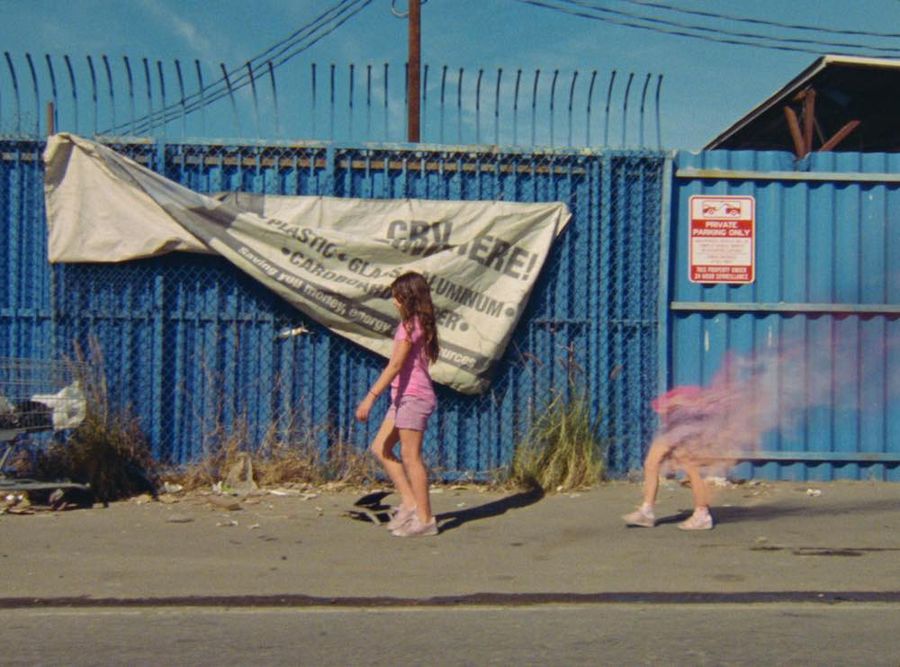
What technical challenges were posed by this shoot?
We had to make it all happen in one day, so we had to be very smart with how we were going to approach the film technically.
We couldn’t waste time on company moves, and as we didn’t have an infinite budget, we had to think about the most practical way of using the resources we had, to save the most time possible each time we had to move. We only had the light we had on that one day, and since it was winter, it was a short day, which also played against us.
We relied on Arnau Valls (a good friend and amazing DoP), who helped us a lot in planning how to move quickly, and a great production team from Object & Animal, who did everything possible to pull it all together.
All the talent, including James and Rosalía, were also fully on board. They helped a lot by being super sharp, super focused professionals. They’re the best! Even though it was a challenge, we had a great time.
Do you feel that your craft as a filmmaker has been evolving over the course of your recent music videos and commercial projects?
Yes, for sure. Every day I live different experiences, learn new skills and meet different people who inspire me and drive me to different worlds. Everything I learn, I express later through commercials or music videos—at least, as much as I can, and as much as clients let me express it.
I have always loved the purity of being immersed in an experience, like an art performance, or art installation, or just life itself. That is something I keep investigating, which also affects my work as a filmmaker and photographer. In this way, I can feel the spaces and the actors in a different way. I started as a fashion photographer; there, you don’t work as much with the feelings and acting of the models, as everything is pretty static. Now, I’m learning more and more about the importance of having a connection with the people in front of the camera and how important it is to have a very clear mental picture of what you want to express.
Being close to Mau Morgó also helps me move towards other ways of expression. I’m getting closer to his 3D animation and technological world, which is adding another layer to my work.
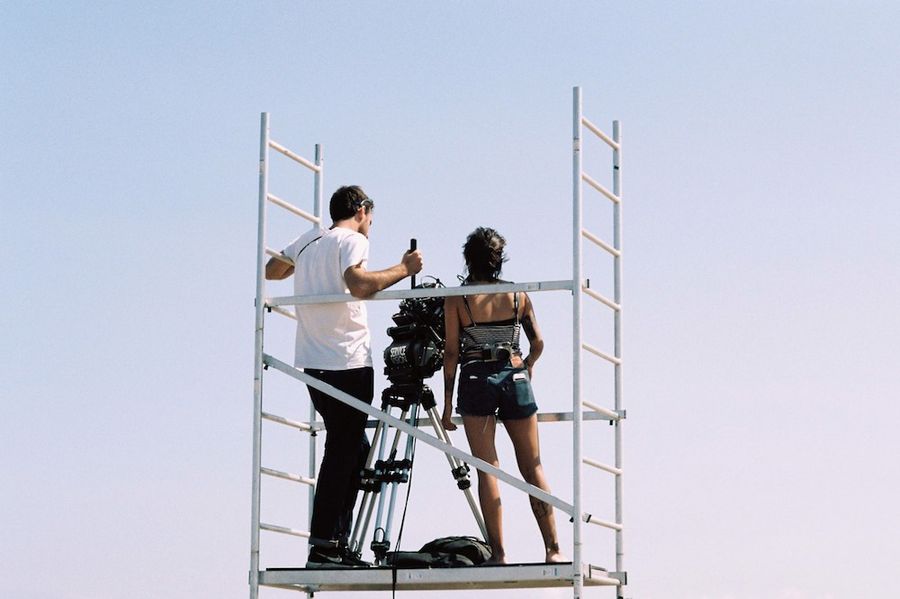
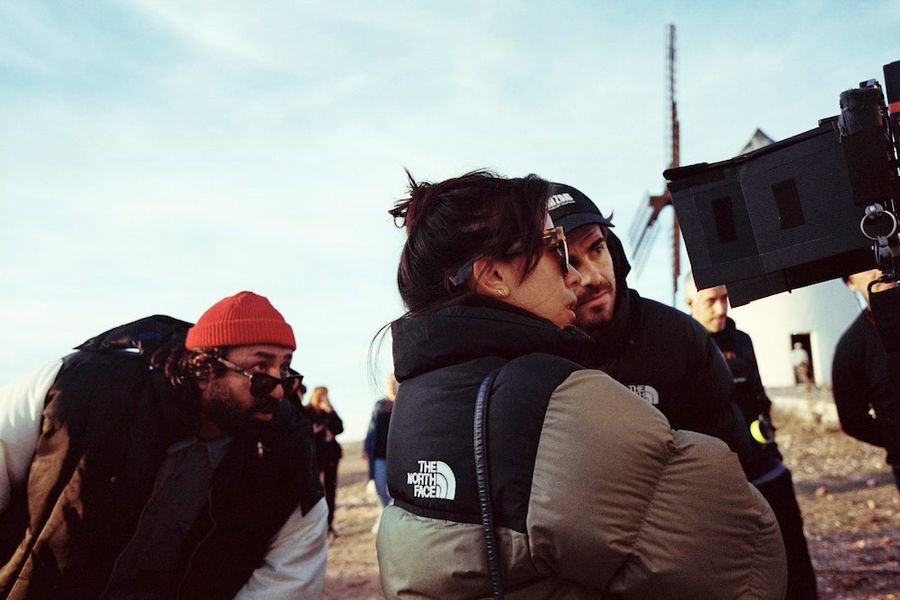
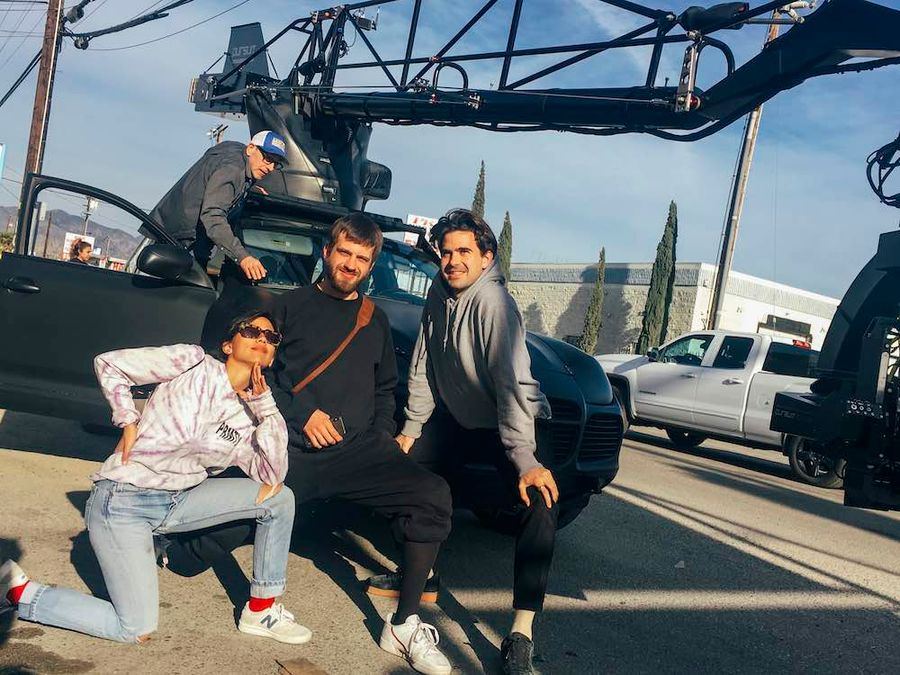
As a director who works across both advertising and music video, what appeals to you about working within each of these disciplines? Have you learned skills from one that can apply to another?
Advertising is a great school for more technical things, I guess. It gives you a lot of toys and tools to work and experiment with, as normally, there is much more of a budget than there is in music videos. It gives you a discipline and an order. It teaches you how to be fast and decisive, as normally we don’t have a lot of time to work before the shoot. It also gives you the opportunity to work with big teams, all of whom you can learn a lot from.
I tend to choose all different kinds of creative projects in order to experience different challenges, so that I can learn different things on every job. The more I learn, the more I can apply later, to create all different kinds of stories.
Knowledge gives you a lot of freedom, and then you can apply this to the world of music videos. Music videos are where you can take more creative risks—I’ve been very lucky to be able to work with artists and songs that have inspired me. Also, the length of music videos can give you additional creative freedom and the ability to explore narratives deeper than the commercial world.
"I have always loved the purity of being immersed in an experience, like an art performance, or art installation, or just life itself. That is something I keep investigating, which also affects my work as a filmmaker and photographer. "
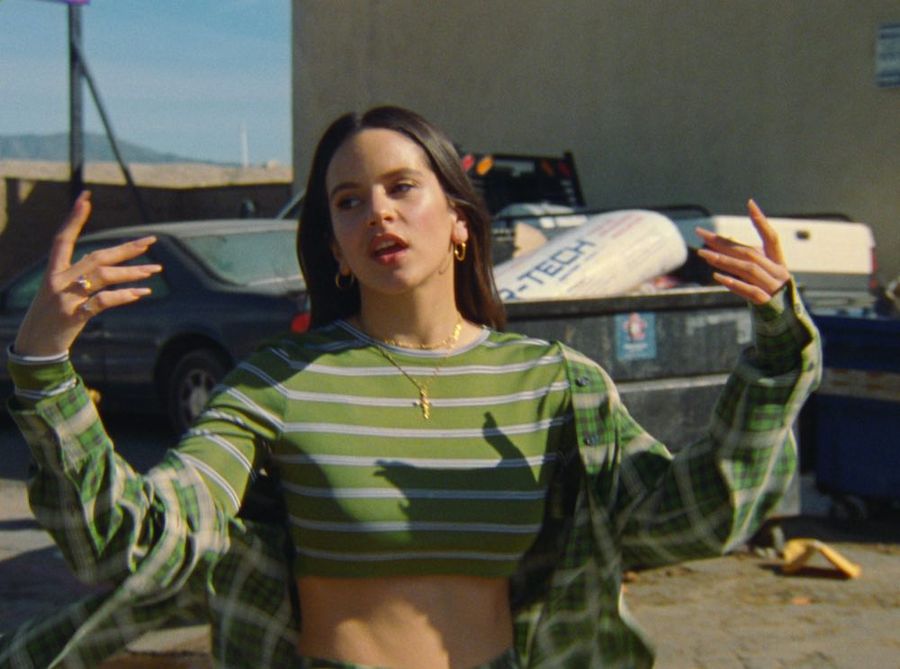
What’s next for you?
I’m just finishing another music video, and after this, I’m very excited to be working on some long form stories, as well as some other art installations and performance projects.
Of course, I’ll keep working on commercials and music videos, as I love the collaborative process of working with other creatives and artists to build narratives. You learn so much working that way.
It’s very important for me to always work on my personal projects, though, where there are no filters and it’s just my ideas there—100% me with total freedom.
In conclusion, what are your thoughts on the need for women filmmakers and diverse storytelling voices to be equally recognized for their incredible work?
I feel like the work of an artist should be recognized regardless of their gender.
I’ve never done the work I do thinking, “Oh, I’m a woman." I just do the things I do because I feel them from my heart. The work of a director nowadays will be recognizable if what they do touches the hearts of the people who are watching it, regardless of the gender of the person who created it. It just depends on the talent.
I also wouldn’t want to win an award or a pitch or a project just because I’m a woman. I would like to win it because of my talent, not because of my gender.
